 Written by ContentPowered.com
Written by ContentPowered.com
This is one of those questions that is asked time and again, and while I’m happy to discuss it with you individually, it gets a little tiring answering the same things over and over again, you know? So, I figure, that’s what a blog post is for. You have a common question, I have a refined answer, let’s put two and two together.
The question is simple. If you were to buy followers on Facebook, would your existing fans be able to tell if you purchased them?
The answer, of course, is complicated. A lot depends on how much your followers know or care to go looking. A lot depends on where you’re buying your followers. There’s also the investigative element. So, let’s take a look at the situation in detail.
Buying Likes: What Happens?
Say you have a Facebook page with around 2,000 followers right now. That’s not a difficult goal to reach for a small business. Say, now, you want to buy likes. You go to a site that sells likes – be it ours or someone else’s – and you look at the packages. You find three of interest.
- Package A: This package will give you 10,000 likes for $100. The site claims the likes are targeted and genuine, users who are interested in your business, but they have some worrying reviews.
- Package B: This package will give you 5,000 likes for $100. Like site A, they claim the fans are targeted, and you don’t really see any reason to dispute it.
- Package C: This package will give you 1,000 likes for $100. This site seems to work on a different business model and doesn’t claim to provide targeted fans, but rather that any fans that like your page will be doing so because they want to see it. It’s the most expensive option, but it has positive reviews.
In every case you’re getting a number of followers for $100. This is where the possible flaw #1 comes in.
Point of Revelation #1: Volume
In the situation we’re discussing, your page has 2,000 fans. If you buy 1,000 fans, you’re up to 3,000, a 50% increase. If you buy 5,000, you have increased your fans by 2.5x. If you buy 10,000, you have increased your fans by 5x.
It’s very, very rare for any site to have such a drastic increase in popularity to be increasing your follower count by 5x over the course of just a few days or weeks. You would have to have extremely viral content, you would have to be promoting it on a wide scale, you would have to actually go viral, and you would have to be converting all of those viewers into followers, possibly via a social locker of some kind.
So, if you buy a huge volume of followers, anyone watching your page will be able to see the unusual jump in volume. Going from 2,000 to 12,000 is an incredible jump and would be very obvious to the educated user that it’s not natural growth. Even if it could potentially be natural, your marketing at the time would have to indicate that growth as well, which means you would have to be building the hype train for some big announcement. In other words, you have to mask the unusual growth, and do it well.
The problem here is primarily in growth rate. Package A has a huge amount to deliver and very likely promises them within 30 days. When they deliver, your growth curve will look more like a sheer cliff. You’ll have little or no growth, followed by large spikes, followed by stagnation.
This is a public metric, in a limited sense. Users can click the “likes” section of your page and see the graph I’m talking about. You get more detail in your Insights panels, but those aren’t publicly visible. So, if the growth curve is too sudden, users will be able to see that you very likely purchased followers.
Now, let’s take another look at those three packages. Let’s say you split off into three multiverse copies of yourself, and in each universe, everything is exactly the same as our own except you went with a different package.
Once all of the followers have been delivered, there’s something else you can look at. This is the second point of revelation.
Point of Revelation #2: PTAT
PTAT is the People Talking About This metric, and it’s seen in the same place as the likes curve. It’s right up there at the top. For example, as of the writing of this post, George Takei’s Facebook page has 9,015,937 followers. His PTAT, above it, is 2,733,457.
What this means is that out of nine million followers, almost three million of them are actively talking to, about, or engaging with George Takei. This counts a lot of different types of interaction, and it covers the last week. Anything that “generates a story” increases PTAT. This includes liking a page, liking a status, commenting on a post, sharing a post, mentioning the user and tagging them, and so forth. It notable does not include things like clicking a link or clicking an ad.
If your PTAT is as high as George Takei’s, about one in three, that’s a very good thing. It means a lot of your fans are engaged and performing actions that help broaden your exposure on Facebook. If your PTAT is much lower, like 1/10 or 1/50, your viral reach is much lower as well.
Additionally, this combines with the previous point of revelation. If you have sudden spikes in growth, but you don’t have a corresponding spike in interactions, it indicates that the followers you got aren’t real.
Fake fans are difficult to deal with, and they don’t help you grow your page. It’s difficult for a follower to identify if the rest of your followers are fake, though. All they can go by is the numbers.
You, however, have a better way. You can look into your Insights. Here are some signs of fake followers:
- A dramatic increase in female followers. Most fake followers are bot accounts that serve several purposes. In addition to following brands on demand, they also try to friend people to grow their own audience, which they can then use for advertising before the account is removed. A traditionally beautiful female works best for this purpose.
- Very little if any status updates on the followers. You can’t check this easily, unfortunately; you just need to check a few at random and see how their feeds look.
- An unusual country of origin. Fake followers tend to be based in one of the many so-called “clickfarm countries” that have very low costs of living, so a few bucks goes a much longer way. These countries include areas like Pakistan, India, Bangladesh, Malaysia, and other middle eastern and southeast Asian nations.
Luckily, country of origin is only a problem with fake fans, which you shouldn’t be buying. This is where the copy of you in Universe A got in trouble. His 10,000 fans turned out to be almost entirely fake, because the price was obviously too good to be true.
The copies of you in universes B and C fared much better here, though B got a lot of disengaged fans, while C got a lot of legitimate fans, at least as far as either of them can tell.
Once again, from the perspective of an average user, only some of this information is visible. Country of origin is no longer visible on the Likes section of a page, possibly because almost everyone has a high concentration of fake fans just from the roving bands of clickfarm users abusing the Facebook ads system.
Point of Revelation #3: Engagement
Let’s talk for a moment about follower quality, and why fake followers are bad.
I’m not going to tell you that buying followers at all is bad, and I’m not just saying that because I’m writing a blog post for a site that sells likes. When you use Facebook ads, you’re converting money into fans. It’s the same principle, when done properly by a third party.
Fake followers are what happens when you take this system and abuse it. It costs a certain amount of money to buy a fan, through Facebook ads as a baseline. If you want to start a business selling likes, you need to provide more likes for a lower cost than the competition. It’s easy enough to do this cheaper than Facebook in most cases, but you also have to compete with all of the other businesses selling likes.
The typical way businesses do this is by abusing the quality of the likes you get. Rather than spending the money, time, and effort required to attract real followers, these businesses just use fake followers. You get more followers for cheaper, but they don’t do anything.
Fake followers don’t like your posts, they don’t comment on your posts, they don’t click your links, they don’t share your updates; nothing. They do nothing for you. They don’t make your posts go viral any easier, and in fact make it harder to gain legitimate reach. They don’t click through to your website, they don’t read your blog posts, and they don’t buy your products.
So, this is another way an educated user might be able to infer that you purchased likes, so long as those likes are fake. If they understand what the average number of comments on a post is based on the size of an audience, they can infer that if you have a significantly lower number of comments than you should have, something is fishy.
Of course, this requires a great deal of education and inference on the part of this hypothetical educated users. For most small and mid-sized businesses, no one is really going to care enough to do that kind of investigating. However, it’s always possible that one person with a vendetta might want to accuse you.
Does having fake likes hurt you? It can, but not in a major way. Reach on Facebook is already low. Engagement is low. You have to have a lot of real followers to get much out of the platform. What this ends up meaning is that a few fake followers will end up following you one way or the other. Worse, there’s no easy way to get rid of them. You would think, with Facebook’s hatred of fake likes, that they would have a tool that would allow you to audit your own followers to remove the fakes.
Buying fake likes will also hurt you in the sense that you’re spending money and getting nothing of value in return. If done improperly, it can be a waste of money, and it’s not a waste of money that can be salvaged in any way.
What about to your reputation if you’re discovered? Frankly, I don’t think anyone cares all that much. If you’ve purchased the 10,000 package when you only have 2,000 likes, you might be outed as a fraudster to your competitors, but as long as your business is legitimate it won’t hurt too much. You might end up on one of those roundup posts, but it will largely be forgotten. You’re probably not Mitt Romney or that rapper who lost 90% of his followers overnight on Instagram.
Point of Revelation #4: Clues and Hints
There are a lot of little things that add up to a suspicion about fake fans. In most cases, it won’t be so obvious. Sellers will trickle in their fans, though it can still be a bit mechanical. Buyers won’t buy an excessive number, at least not all at once. They might have well-done profiles coming from US locations, even.
Some suspicions might include:
- The page exists in a niche industry that isn’t likely to have a lot of social engagement. A small business HVAC in a small town probably won’t have more than 50-200 organic fans, depending on how much effort they have put into their marketing. If they have 2,000 or 5,000 or what have you, they’re probably buying fans to make their business look better. Perhaps not necessarily, but perhaps so.
- Very low or no engagement on posts. If you have over 1,000 fans, you might expect to see more than 0 likes, comments and shares on the posts the page makes. A high number of followers with a low engagement is an indicator that something is up.
- The aforementioned low PTAT and other such metrics.
You can also explore Facebook’s open graph search. Most people don’t know, but if you type in Facebook’s search bar, you can find more than just people. Here are some sample queries you can use, and what to look for.
- Favorite movies of people who like Page Name: This query will show you movies liked by people who like a page, which will betray interests. The only movie pages that buy likes tend to be indie films or foreign films, not real big budget blockbusters.
- Languages of people who like Page Name: This query should show English as the primary language, and some European languages as secondary. For a page that bought a lot of fake likes, though, it will show languages like Turkish.
- Countries of people who like Page Name: This query will show country of origin of followers. If clickfarm countries are high on the list, it’s likely they purchased fake fans.
All of this is available to the average user, but most people don’t actually know it exists. Therefore, it’s easy to ignore.
The moral of the story, the answer to the question in the title, is that yes; users can typically tell that you purchased likes, assuming you purchased poor, fake followers. If you purchase high quality followers, through something like package C in our hypothetical scenario, or through targeted Facebook ads, you will have none of these warning signs. The followers will be legitimate, so there’s no difference between that and organic growth.
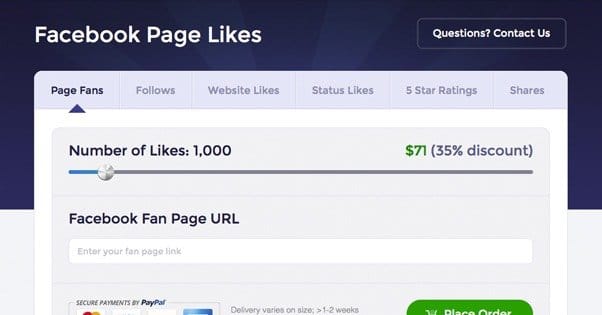
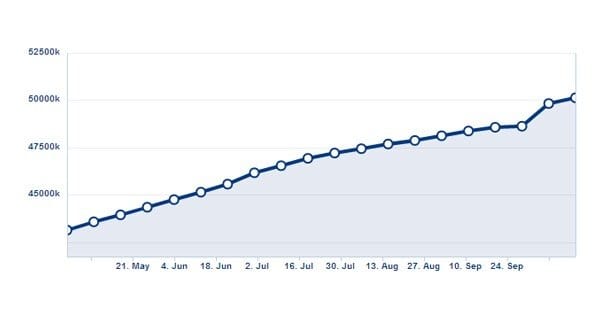
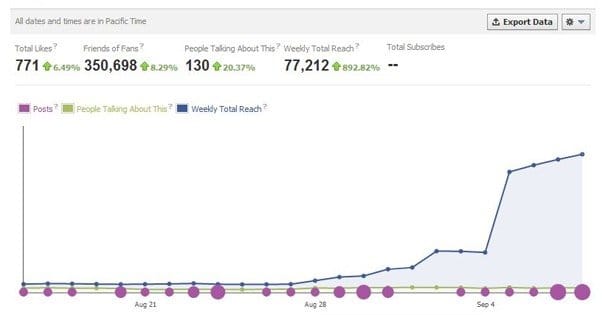
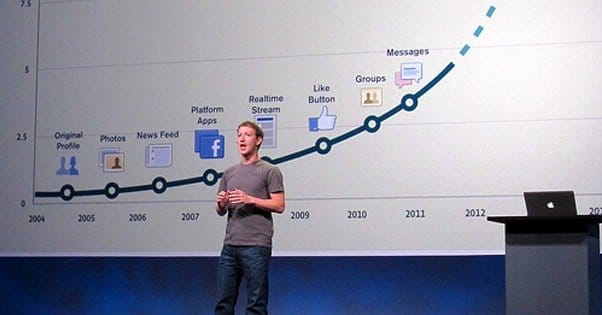
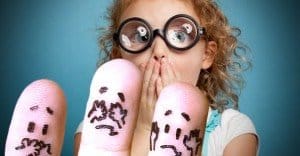
Your writing is amazing, it’s helped me a lot THANK YOU!